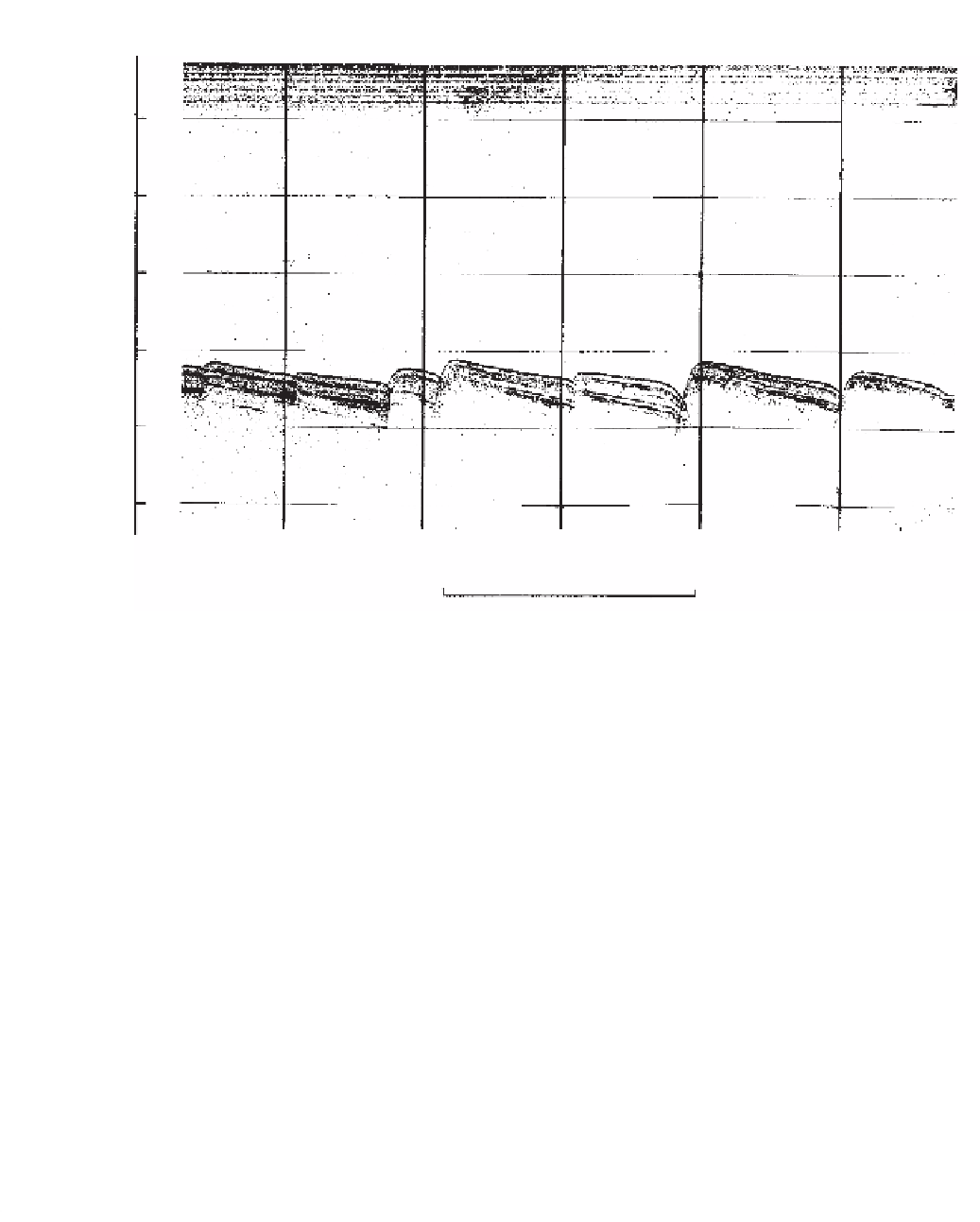Geology Reference
In-Depth Information
0
.
1
0
.
2
0
.
3
0
.
4
0
.
5
0
.
6
S
0
2km
Fig. 4.57
Pinger record from the northern Aegean Sea, Greece, across a zone of active growth faults extending up to the sea bed.The sea
floor is underlain by a layered sequence of Holocene muds and silts that can be traced to a depth of about 50 m. Note the diffraction
patterns associated with the edges of the individual fault blocks.
Sparker sources can be operated over a wide range of
energy levels (300-30 000 J), though the production
of spark discharges of several thousand joules every few
seconds requires a large power supply and a large bank
of capacitors. Sparker surveying therefore represents a
versatile tool for a wide range of applications, from shal-
low penetration surveys (100 m) with moderate resolu-
tion (2 m) to deep penetration surveys (>1 km) where
resolution is not important. However, sparker surveying
cannot match the resolution of precision boomer
surveying, and sparkers do not offer as good a source
signature as air guns for deeper penetration surveys.
By suitable selection of chamber size and rate of
release of compressed air, air gun sources can be tailored
to high resolution or deep penetration profiling applica-
tions and therefore represent the most versatile source
for single-channel profiling. The reflection record
shown in Fig. 4.56 was obtained in a shallow water area
with a small air gun (40 in
3
).
4.15.2 Sidescan sonar systems
Single-channel reflection profiling systems (sometimes
referred to as
sub-bottom profiling systems
) are commonly
operated in conjunction with a precision echo-sounder,
for high-quality bathymetric information, and/or with
a sidescan sonar system.
Sidescan sonar
is a sideways-
scanning acoustic survey method in which the sea floor
to one or both sides of the survey vessel is insonified
by beams of high-frequency sound (30-110 kHz) trans-
mitted by hull-mounted or fish-mounted transceiving
transducers (Fig. 4.59). Sea bed features facing towards
the survey vessel, such as rock outcrops or sedimentary
bedforms, reflect acoustic energy back towards the
transducers. In the case of features facing away from the
vessel, or a featureless sea floor, the acoustic energy is
reflected away from the transducers. Signals reflected
back to the transducers are fed to the same type of
recorder that is used to produce seismic profiling records,

